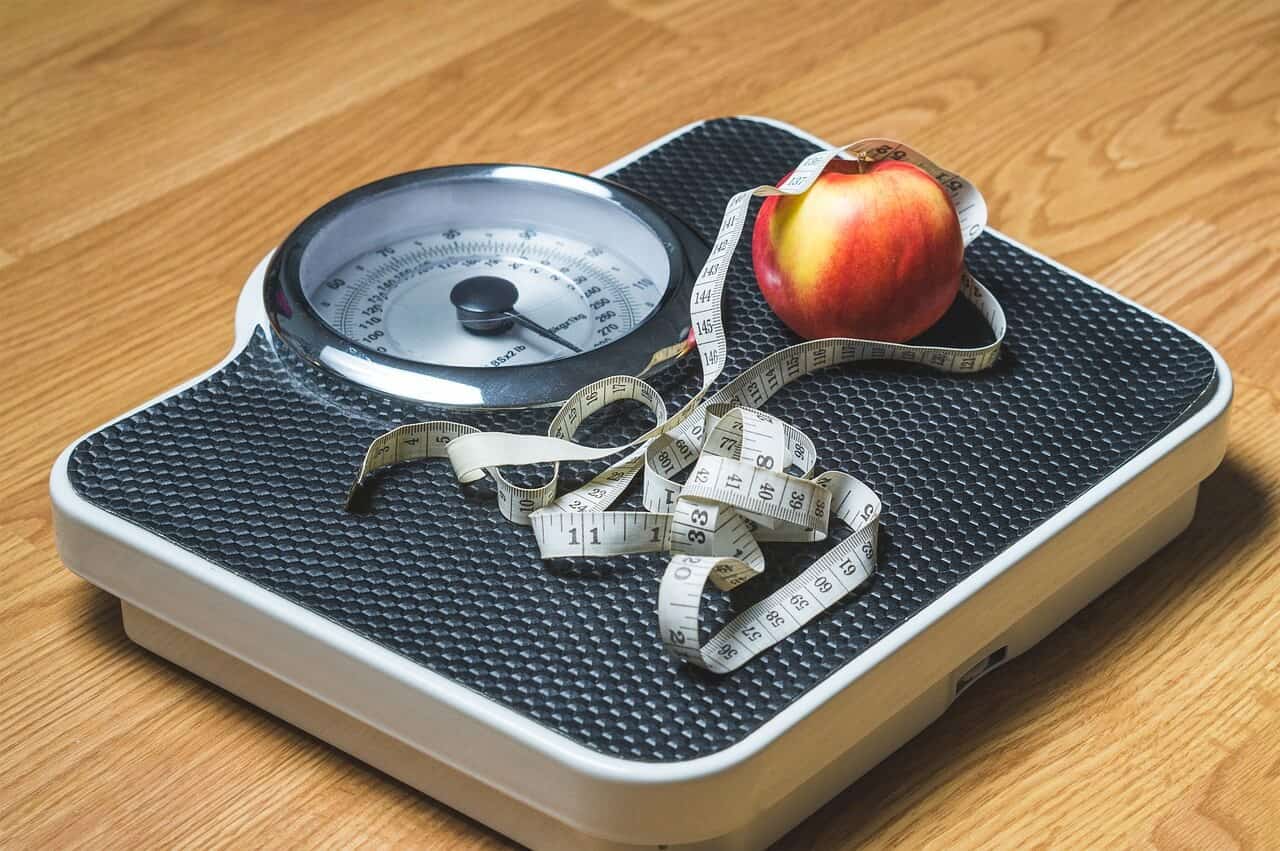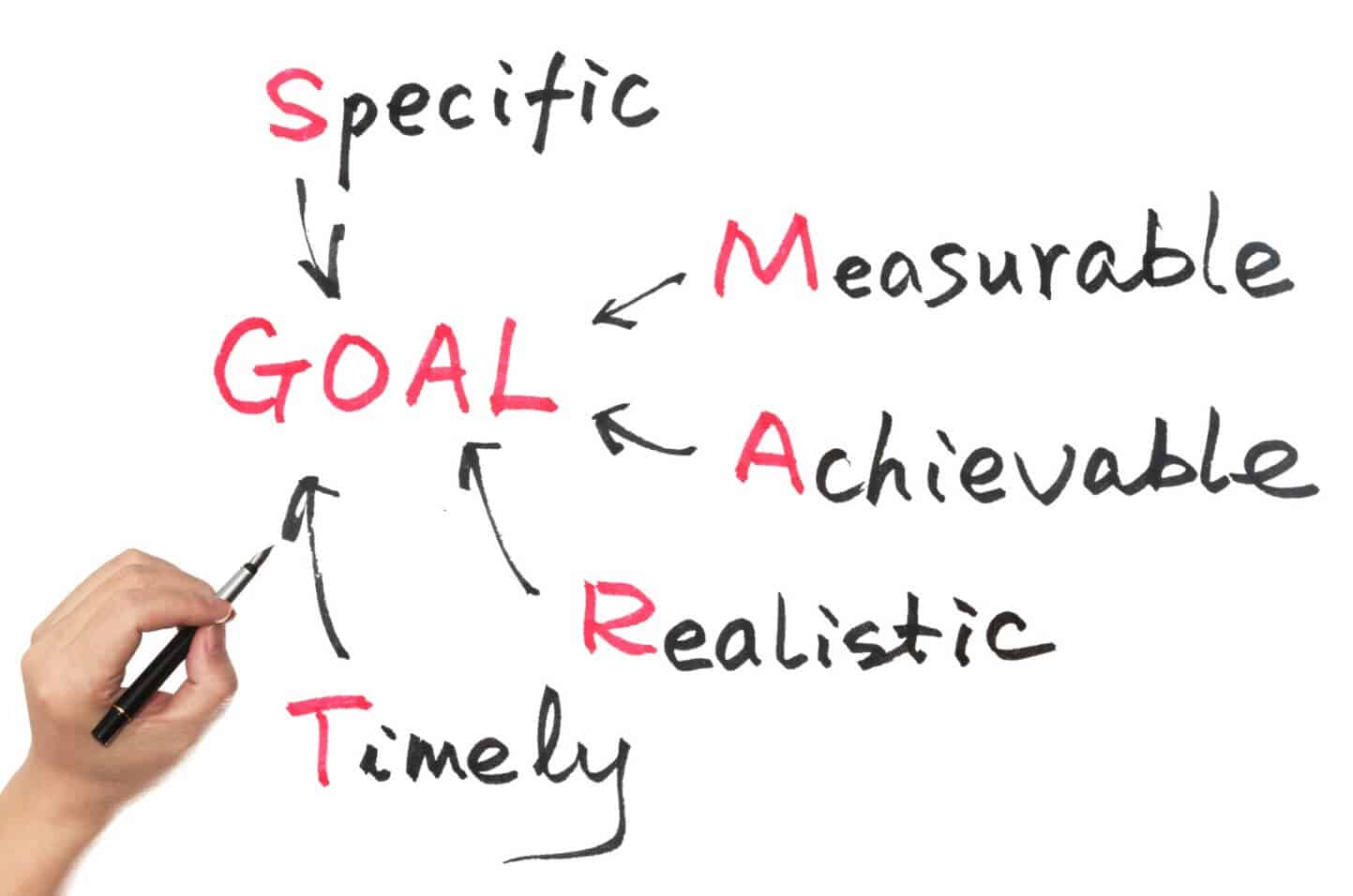Are You Setting SMART Weight Loss Goals or Setting Yourself Up for Failure? - 6 Things You Need to Know
The average dieter in the United States starts and fails a weight-loss program about four or five times a year. Why? Are they setting SMART goals? Are they setting themselves up for success or failure?
Hold the phones – What is the SMART acronym?
The SMART acronym is Specific, Measurable, Achievable, Realistic and Timely.
Often the abandonment of the program results in weight gain. Being SMART can help you or someone you know to find success in the next diet or weight-loss program they decide to pursue.
Being SMART isn’t a measurement of your intelligence; it’s an acronym that is commonly used for lifestyle or behavioral modification. It gives a generalized statement, like wanting to lose weight, a clearer meaning and compelling direction.
It can be used for broad goals like trying to quit smoking, or it can be used for more direct goals like wanting to run a sub-24-minute 5k.
“As a counselor, I work with clients to see the importance of taking care of yourself, taking the time to meal prep, taking the time to work out, and taking the time to enjoy life. Positive lifestyle change is not an easy task; it will take time to regain the healthy behaviors and habits that you had before life happened. Wellness is hard, change is hard, being unhealthy is hard, and having health issues is hard. You have to pick which hard you are willing to work through,” states Jennifer Reynolds, EdS, LPC-S, Therapist at Talk Space.
In the case of this article, we are applying it to weight loss. So when you begin to think about your next goal and how to conquer it, remember to be SMART about it.
Sticking to healthy lifestyle changes is difficult for some people. That’s why apps like Noom work with human coaching and a robust and virtual community to help you stay with your plan.
What are SMART Goals?
SMART goals begin by taking a generalized statement or aim and beginning to set it up to become more precise and achievable.
- Specific- Begin focusing on and clearly defining what the intended outcome is and what you’re looking to accomplish. Make it so anyone can understand your goal.
- Measurable- How will the progress be measured? How will you know when you’ve reached your goal? Desired outcomes are better achieved if there is a way to monitor and manage the progress.
- Attainable- Have you set a goal that makes sense for you? Does it challenge or stretch you, but remain possible?
- Realistic- Is the goal within the realm of possibility? Sometimes setting a short-term goal, you know can be achieved quickly, will lead to procrastination. But if a goal is set too high, it might become discouraging when little progress is made. So it’s a mix of will and effort to complete the goal. Basically, can you do it? “Everything that happens to you is a reflection of what you believe about yourself. We cannot outperform our level of self-esteem. We cannot draw to ourselves more than we think we are worth,” states Sascha Alexander, a Life and Health Coach.
- Timely- When is the due date? What time frame are you looking to complete this goal? Offering a time line gives the goal meaning, and a sense of urgency to do it.
SMART Goal Setting for Weight Loss
SMART goal setting for weight loss can be done rapidly or gradually. For long-term weight loss taking a diet pill or an appetite suppressant alone won’t cut it (see article in Women’s Health).
This is why so many Americans fail at trying to lose weight.
“Excuses also either go hand in hand with, or like to disguise themselves as, blame. Ever heard someone say, ‘I can’t lose weight because of my genes,’ or ‘because of my thyroid,’ That’s someone blaming their circumstances and putting their body out of the realm of their control.
While, yes, medically, some things may be more difficult for one body to accomplish when compared to another, that doesn’t mean that it can’t be done,” states Kimberly Spencer, Coach, Writer and Owner of Crown Yourself.
There needs to be a full-lifestyle modification to help lose the weight and keep it off. There’s a whole variety of different methods and questions that can arise when seeking to lose weight.
“The “head-heart-hands” approach for building new habits is the key for success. Take on lifestyle changes that appeal to the mind, emotions, and body. When you are starting new habits, make sure you exercise these three key areas,” states Thai Nguyen from The Utopian Life.
Did you know muscle weighs more than fat, so the common question is, “how can you burn fat, build muscle and lose weight at the same time?”
That’s easy – the three processes occur independently of each other. You can cut calories and workout to lose fat and gain muscle. But, you can lose an average of one to two pounds a week, when dieting healthy, but it takes a month or longer for some to gain one pound of muscle.
One thing I preach to my clients when we begin the journey to a healthier lifestyle is understanding there will be a moment when you might gain weight, or hit a plateau, in the very beginning. And that can derail an individual to fall back to counterproductive habits.
This is why it’s important to set SMART weight-loss goals. “Goals & questions with neutral middle-of-the-road options create apathy, and are less likely to encourage behavior change,” states Ioannis Kareklas, Ph.D.
Have you set SMART goals or set yourself up for failure? Noom can help. Each weight-loss plan is personalized to YOUR needs — no generic plans with this program.
Examples of SMART Goals
“Momentum is critical to winning the game of fitness. With that said, people often fall short of their goals because they lose perspective on their situation. For example, if someone wants to lose 20 pounds, they should set smaller benchmarks that are attainable in shorter periods. We all want to feel like winners, and when you set micro goals, you rig the game in your favor along with becoming more confident,” states Julian Hayes, Certified Nutrition & Sleep Science coach.
So let’s take a client who’s looking to lose 40 pounds for a wedding in six months. She is 5’7″ and currently weighs 200 pounds. By the BMI chart, she would be considered overweight. By losing 40 pounds, it would put her in the normal/healthy BMI range.
So in this example of a SMART goal, I’ll explain the specific path needed to follow to reach a specific goal:
Specific
Lose 40 pounds in 6 months. First progress milestone is to lose 8 pounds in 5 weeks
Measurable
The scale would be the most comfortable measurement of weight loss. But because we determined the client’s BMI at 5’7, she can also use body composition or circumference measurements to measure her progress too.
Attainable
Losing eight pounds in the first five weeks is attainable. It also considers the body’s general adaptation to added or adjusted physical activity exertion and intensity.
Realistic
Aiming for eight pounds in five weeks is practical and keeps the client on track to achieve her overall goal of 40 pounds in 6 months for the wedding.
Timely
Five weeks is a reasonable timeframe to lose eight pounds because it’s not unusual to lose 1/2 to two pounds per week.
Individual SMART(er) Goals
By setting up smaller milestones within SMART goals can help the person see if the changes they are making are working.
Say this client in the first five weeks only loses five pounds. As she begins to self-analyze her goals, she may realize she hasn’t added any physical activity to her weekly routine. She then needs to set SMARTer goals.
The loss of five pounds is not a failure. It is progress, but it can always be better. She reevaluates and redirects her SMART weight loss goals for the next 5-week milestone by incorporating 30-60 minutes of physical activity three to five times a week. By doing this, it might help her push toward the weight loss she is striving for.
If you look at the American Heart Association, the AHA recommends 75 minutes per week of vigorous exercise. Or it can be a combination of moderate and vigorous exercise for a recommended 150 minutes, which parallels the Department of Health and Human Services.
So, as this individual begins adding exercise to her weekly plan, she begins to improve her overall health and sets herself up to successfully lose the weight, and of course, keep it off.
With Noom, you can learn how to set SMART goals with a personalized touch and human coaching. You’re never alone on your journey.
What Users Are Saying
“Having the awareness that you need to change something is the first step to creating change. But having an ambiguous goal gives you little idea for what direction to head in and makes the process murky at best. Not to mention actually measuring your success is damn near impossible when you don’t know what to measure. That creates a dangerous pairing because without clarity on your goal you make it easy to fall off track when things don’t work out the way you expect them too. It also makes it difficult to make any adjustments when things don’t work out! If you don’t track anything you’ll have no idea what to change? ?. Instead of running in circles trying to get toned and eat healthier. Give yourself Specific parameters to follow! Focus on building lean muscle and eating more vegetables instead? Take it a step further and make it Measureable, add a 5 pounds of muscle and eat 3-5 servings of vegetables a day. These are both Attainable for you to accomplish and Relevant to your goal of being heathier and more toned. Give your self a Time-Bound deadline to follow and it’ll kick your butt into high gear to get it accomplished in time! Have a clear direction of what you need to accomplish increases your likelihood of success!”
“I had a woosh of 9 lbs down in my first week and then didn’t lose anything for 3 weeks despite doing everything “right”… eventually it started back up again and I had another woosh of 4 lbs but having a weekly goal would have mentally destroyed me in those 3 weeks.”
“Losing a pound or two per week is a reasonable goal and 2000-2200 seems reasonable. Hunger control requires finding which foods are filling for you. Most people find that protein and complex carbs (beans, veggies, whole grains, pseudograins, whole fruit) are more filling than fats and simple carbs. Try adding a bit more lean protein and plenty of vegetables to your diet. You can also play around with when you eat food. Some people eat one meal per day, some eat six. Do what works best for you. There’s no right answer. I eat a big breakfast, moderate lunch, and skimpy dinner because that is the most comfortable for me, but other people skip breakfast or even eat just once per day.”

The Bottom Line on SMART Weight Loss Goals
Using the SMART method will offer a person a feeling of accomplishment and control as they begin to work through the process. There can be snags and setbacks, but by reevaluating the SMART goals, it can offer a solution on how to redirect for improvement.
Set a goal and break it down into several small-easy to achieve- micro steps. “Wouldn’t it be easier if we could just set our mind to something and then do it? Don’t be discouraged; we humans need time to make changes. Even though the turtle-steps are absurdly small, they are the beginning of big change,” says Christine Carter, Ph.D.
It’s empowering to know that all results fall on the individuals’ willingness to establish and follow through on little milestones or goals throughout the journey. If the timeline of the weight loss goal is long in duration, be sure to set up checkpoints throughout the process. If the timeline is short, make sure progress can be measured accordingly.
Are You Setting SMART Weight Loss Goals or Setting Yourself Up for Failure? Questions & Answers
- Recent:
A SMART fitness goal example is one that is Specific, Measurable, Achievable, Realistic, and Time-bound. For instance: “I will go to the gym three times a week for 30 minutes of strength training by the end of the month.”

Julia Steier, C.P.T., F.N.S, is a former NCAA Division I athlete and has been working in NCAA intercollegiate athletics for 10 years. Inspiring student-athletes to dream big and push themselves through training, Julia has coached many athletes over the years to becoming Regional and National All-Americans. Julia has lost over 65lbs and is living her best life now. She used fitness to deal with the grief of losing her husband, which has become her passion for motivating, inspiring and encouraging those around her to work towards finding the best versions of themselves through a healthy lifestyle. Julia is featured in Runners World, Women’s Health and more.



